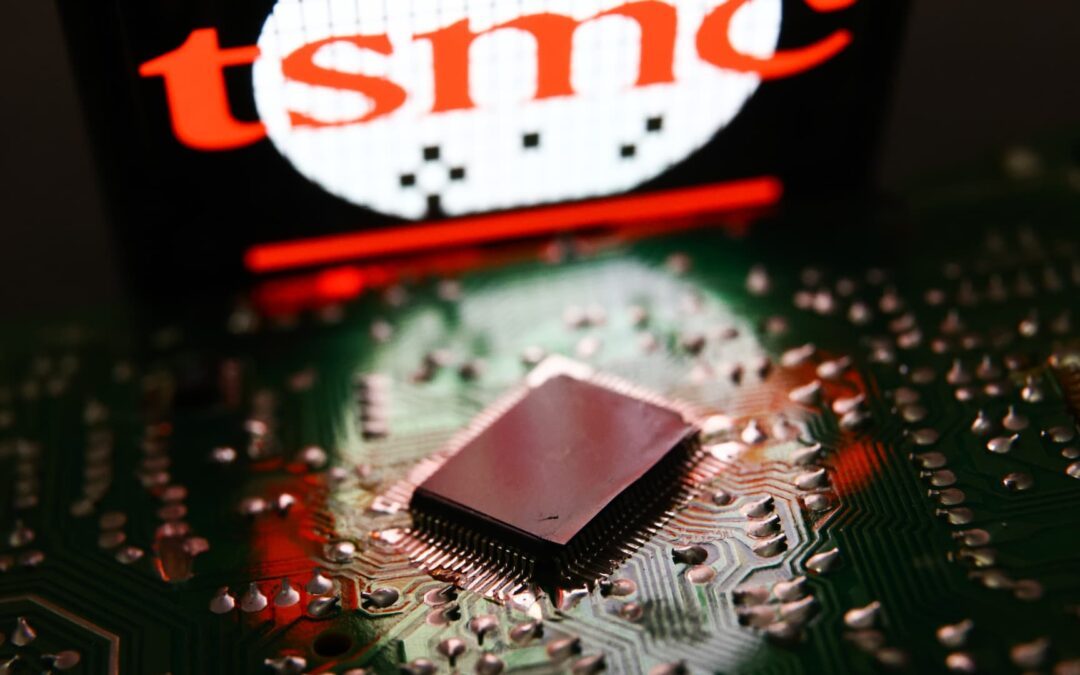Jakub Porzycki | Nurphoto | Getty Images
The world’s largest contract chipmaker Taiwan Semiconductor Manufacturing Company on Thursday posted better-than-expected profit and revenue on the back of weaker macroeconomic conditions.
Here are TSMC’s fourth-quarter results versus LSEG consensus estimates:
- Revenue: 625.53 billion New Taiwan dollars ($19.62 billion), vs. NT$618.31 billion expected
- Net income: NT$238.71 billion, vs. NT$225.22 billion expected
TSMC reported revenue slipped 1.5% from a year ago to NT$625.53 billion, while net income dropped 19.3% from a year ago to NT$238.71 billion. That compares with TSMC’s guidance for fourth-quarter revenue between $18.8 billion and $19.6 billion.
“In the fourth quarter, revenue increased 14.4% sequentially [from the third quarter], supported by the continued strong ramp of our industry-leading 3-nanometer technology,” said TSMC in its fourth-quarter earnings report.
TSMC counts Apple and Nvidia among its biggest clients. TSMC produces the most advanced processors found in Apple’s iPhones.
During the firm’s earnings call on Thursday, CEO C.C. Wei acknowledged that 2023 was a “challenging year for the global semiconductor industry” because of macroeconomic conditions and an inventory adjustment cycle.
Chipmakers such as Samsung Electronics and SK Hynix have reported declines in quarterly profits due to a post-pandemic plunge in the demand for consumer electronics like smartphones and laptops. That resulted in smartphone and PC makers grappling with excess inventories of chips.
But analysts say chip inventories at smartphone and PC makers are running down and expect restocking demand to pick up.
Wei said that despite the challenges, the firm was “well positioned to capture high performance computing-related growth opportunities” from the rising emergence of generative AI applications in 2023.
“We expect 2024 to be a healthy growth year for TSMC, supported by continuous strong ramp-up of our industry-leading three nanometer technologies, strong demand for the five nanometer technologies and robust AI-related demand,” said Wei.
TSMC expects first-quarter revenue to come in between $18 billion and $18.8 billion this year.
But he also flagged persisting macroeconomic headwinds that could weigh on consumer sentiment and market demand.
“TSMC’s strong ramp-up in N3 and AI applications positions it as a major beneficiary in AI semiconductors,” Brady Wang, associate director at Counterpoint Research, said Tuesday. N3 refers to TSMC’s most advanced node, which produces 3-nanometer chips.
“Nanometer” in chips refers to the size of individual transistors on a chip. The smaller the size of the transistor, the more of them can be packed onto a single semiconductor. As such, smaller nanometer sizes typically yield more powerful and efficient chips.
“The anticipated surge in AI-based PC applications in 2024 underscores TSMC’s crucial role, solidifying its dominance and best positioning in providing sophisticated 5-nanometer and 3-nanometer technologies for AI-enhanced computing devices,” said Wang in a note on Jan. 16.
TSMC currently manufactures 3-nanometer chips and plans to start 2-nanometer mass production by 2025.







